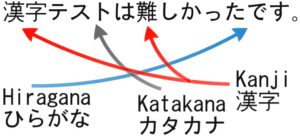Just as written text can be indexical, it can also be iconic. For example, a handwritten extract in a novel can be iconic in its capacity to convey the mental state of its writer at the moment of writing it. Similarly, the use of italics and capital letters can be iconic in that they represent a nuanced pronunciation.
The iconic capacity of the written word has its basis in metaphor. Just as the expression time is money demonstrates a mental association between the concepts of time and money, similar associations can be demonstrated by visual metaphors in written language; we tend to associate, for example, letter size with volume. Lewis Carroll famously took advantage of this with the beetle character in Through the Looking-Glass: The creature’s tiny voice is rendered in correspondingly tiny type.

Though the relationship between type size and spoken volume might be universal, Alexandra Jaffe warns that such paragraphemic iconicity may not always be so: “Becoming literate is not just the acquisition of orthographic decoding skills, but also involves the development of a (culturally conditioned) graphic sensibility.” In truth, all aspects of communication—as an endeavor that depends on symbolic, indexical and iconic associations in itself—depend on the cultural background of both interlocutors.
The same apparently goes for communication online: In a study on the localization of Wikipedia pages, the researchers concluded that the Web is, to some extent, culturally determined. They found diverse cultural markers that differentiated the appearance, organization and particular content of different localized websites. “Members of different cultural groups,” they say, “prefer different icons, colors, and site structures.”


